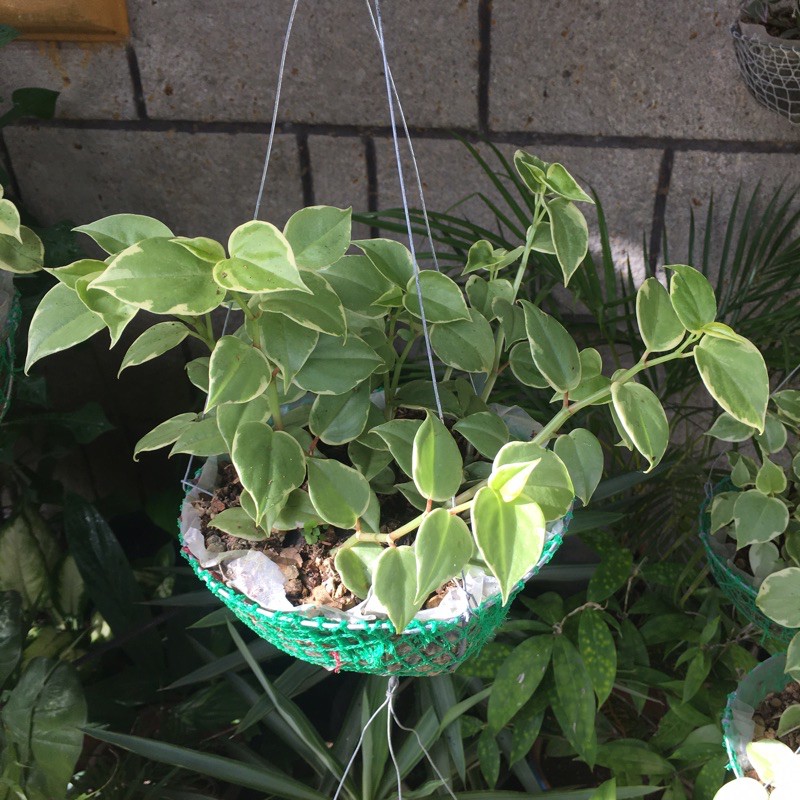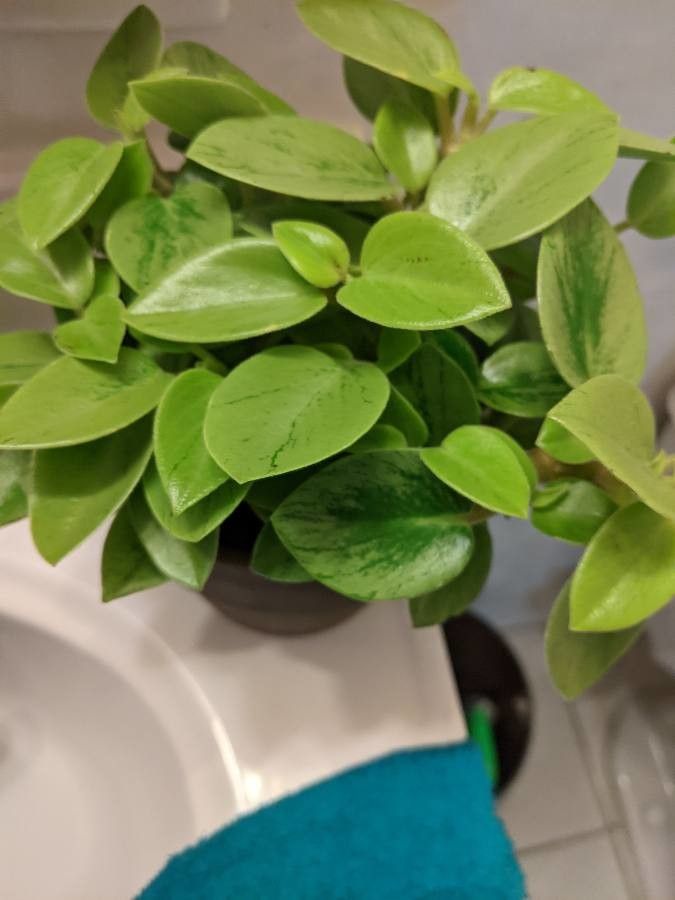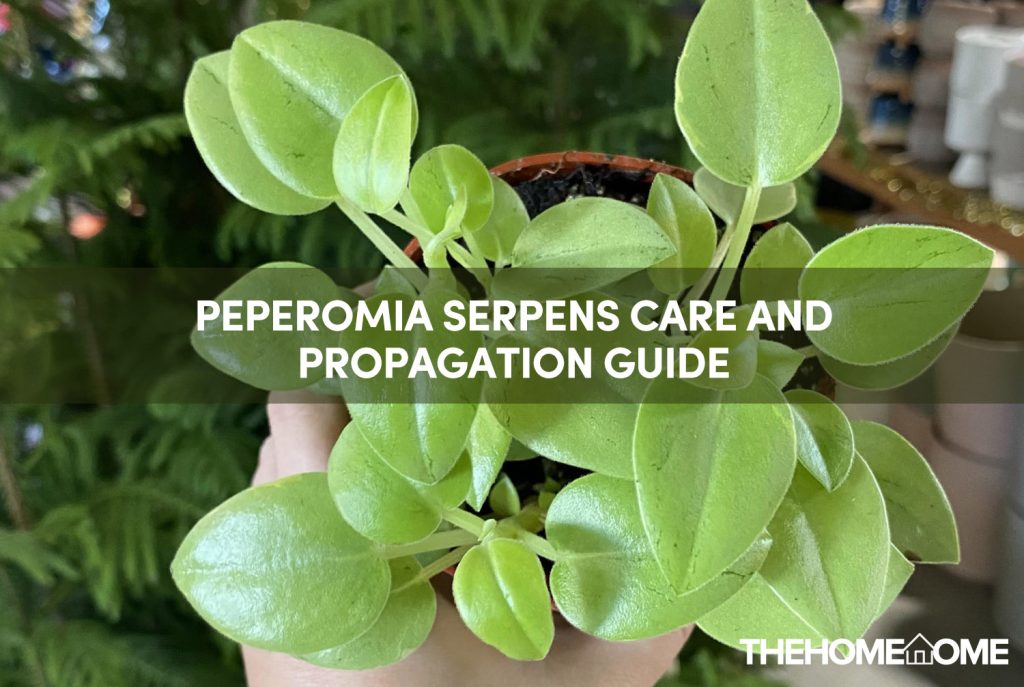Because of their thick leaves, a large number of plants of the peperomia family are considered succulents; nonetheless, most of them demand greater humidity and temperature than other succulent plants. Peperomia Serpens is one of these plants.
Peperomia Serpens is one of the most attractive plants you can cultivate both inside and outside your home. If you are looking to add a touch of the tropics to your home, then this plant is for you.
Growing peperomia Serpens indoors isn’t a hard nut to crack; however, a guide will help you get it right. This peperomia Serpens care and propagation guide have been put together to land you a beautiful and healthy peperomia Serpens.
Peperomia Serpens Explained
Peperomia Serpens is a stunning species of the peperomia family, the plant originates from the tropical region of South America, the West Indies, and Mexico. Serpens is known and loved for their pointed heart-shaped leaves, with shiny green foliage.
It is often grown in hanging baskets due to the length its stem can grow to. The plant itself can grow to about 6 to 12 inches in height and 6 to 12 inches in width. The peperomia serpent is a fast-growing plant and you can have your Serpens plant in one growing season.
| Common name | Peperomia Serpens |
| Scientific name | Peperomia Serpens |
| Plant genus | Peperomia |
| Plant type | Perennial evergreen |
| Plant size | 6 to 12 inches |
| Plant foliage | Shiny green |
| Native | South America, West Indies, and Mexico |
| Toxicity | Non-Toxic |
Peperomia Serpens Propagation

Peperomia Serpens is prized not just for its beautiful leaf, but also for its ease of propagation. This increases the plant’s accessibility and availability to the general public. Propagation can be accomplished in a variety of methods, although stem and leaf cuttings are the most straightforward.
Although these two ways are similar, they involve different parts of the plant. They can be propagated in both soil and water. The guide below will help you propagate your plant without stress.
Needs For Propagation
- A healthy and mature peperomia Serpens
- A sterilized knife or scissors.
- Potting soil
- Water/a jar
- Pot
1. Stem Cutting
- Make a stem cutting of about 5 inches long, from a healthy and mature serpent plant. Ensure the stem you are cutting is healthy and has few leaves on it. The cutting should be made below the nodes.
- Remove the leaves from the lower part of the stem, leaving only the leaves on top.
- Dip the tip end of the stem into rooting hormone powder.
- Prepare your potting mix and place your plant into the soil. use your hands to cover up any hole that is left open in the process of putting your cutting in the soil.
- Cover the pot with a transparent plastic bag, to create a humid environment for better growth of your plant.
- Water the soil frequently enough to keep it moist.
- Your cutting will develop its root in about 4 to 6 weeks. When the plant begins to develop new roots, you can begin to treat it with the standard Serpens care guide.
2. Through Water
- Put some clean water into a transparent container or jar and put your stem cutting into it.
- It is advised that you place the container of water in a room where it can get access to indirect light.
- Change the water as often as possible to avoid the buildup of bacteria. In three to four weeks, your plant should begin to develop its roots. You can then transfer your plant into an already prepared potting mix.
3. Leaf Cutting
- Identify a healthy leaf from the mother plant and cut it. You can cut more than one, depending on how many you choose to propagate.
- Divide the leaf into two (your plant will grow even from a half leaf) you can also plant the whole leaf.
- Put the tip of the leaf into a rooting hormone, to increase the chance of success of the plant.
- Dip the leaf into an already prepared soil and close up the open holes with your finger.
- Cover the container with a transparent plastic bag to give it a greenhouse effect and create humidity.
- In 4 to 5 weeks, your leaf will develop roots and have new leaves.
Peperomia Serpens Care Guide
Although members of the peperomia family, such as the Serpens, are very easy to care for, one key feature of their care is that they prefer balance, which you may achieve by following the instructions below.
1. Light
Similar to its relatives in the peperomia family, the peperomia Serpens will grow best when it is provided bright, indirect light. We suggest that you place your plant by the east or west window, for bright, indirect light.
Direct, full sun will cause burns on your plant and cause it to fade, likewise, placing your plant in total shade will make your plant to be leggy and not grow properly, with small leaves.
2. Soil
The peperomias Serpens grow best in well-draining light but nutritious soil. the most important criteria for good soil is that it has to be well-draining, then rich in nutrients. This is why you should make use of the right materials when making your potting mix. i.e., perlite, compost, etc. this will not only provide the right nutrients for your plant but also ensure that water goes through the soil properly.
3. Humidity
As a tropical plant, the peperomia Serpens loves humidity and will grow best when it is provided humidity. The ideal range of humidity for your peperomia plant is between 40 to 50 percent. The good thing is that this level of humidity can be found in your home, and this makes the home humidity just right to grow your plant in.
If you live in an extremely dry environment, we advise that you seek an alternative to providing humidity for your plant such as misting the leaves occasionally, placing your plant on a pebble tray, or making use of a plant humidifier. All of these can help increase the humidity level of your plant.

4. Water
The peperomia Serpens have the likeness of succulents and this means that it has one or two traits with the succulents i.e., its thick leaves. Due to this, the plant can accommodate water in its leaves and tolerate a little neglect. However, what the peperomia Serpens will not tolerate is overwatering.
The plant will not grow well if it is soaked, or too moist. There is a way to water your Serpens right. Water your plant, afterwards, allow the excess water to pour into a tray and get rid of it immediately. After this, wait until your soil is completely dry before you water again.
You can know if your soil is dry by putting your finger 2 inches into the soil. While the plant does not like to be watered too much, it will not tolerate a lot of dryness. To strike a balance, ensure you check with either your finger or a moisture checker to know when your plant is to be watered.
Another alternative is to water your plant once in 2 weeks. However, ensure you water your plant less in the cold months.
5. Temperature
As a typical tropical plant that the peperomia Serpens is, it will grow best when it is placed at a temperature of 68 degrees F. Ensure that the temperature doesn’t drop to 15 degrees C. This means you can comfortably grow your plant at normal room temperature. Ensure that they are not exposed to AC vents or cold.
6. Fertilizer
Your peperomia Serpens will grow beautifully when you add organic materials such as compost, humus, etc. as long as you grow your plant in the right soil, mixed with the right materials, your plant will not need additional fertilizer.
However, feeding your plant a tiny dose of balanced liquid fertilizer will do it some good, especially during the growing seasons. Feed it once a month during this time and remember to reduce the fertilizer to half its strength.
Peperomia Serpens Growing Tips
- You can grow your Serpens plant in small pots because peperomia Serpens is a small plant. However, ensure the pots come with drainage holes.
- Ensure that the plant is kept from bright light as this can damage the leaves.
- Watering can lead to the death of your plant, only give your plant water, when it needs it.
- When the seasons change, you must make adjustments to how you care for your plants i.e., waterless in cold seasons.
- For less humidity, we recommend the use of pebble trays for your plant.
Frequently Asked Questions
Is Peperomia Serpens A Succulent Plant?
Can I Prune My Peperomia Serpens?
What Happens When I Overwater My Peperomia Serpens?
Final Thoughts
Peperomia Serpens is one of the most adorable plants to grow in the home; it is perfect for you if you need to bring tropical vibes into your home.
Ensure that you follow the care guide, so you do not end up with a troubled plant. You can propagate as many as possible, using the leaf and stem cutting method.
More Houseplants On TheHomeTome:
